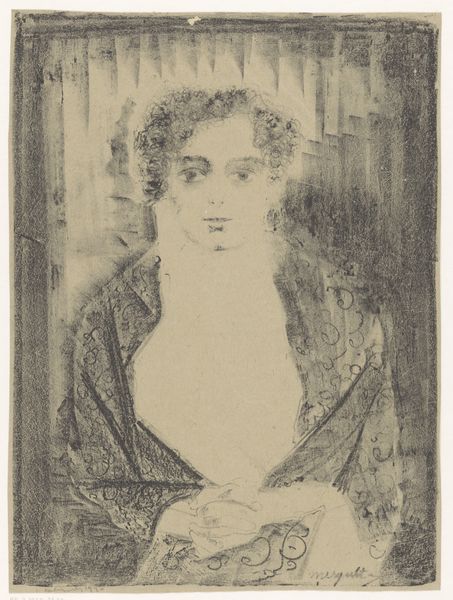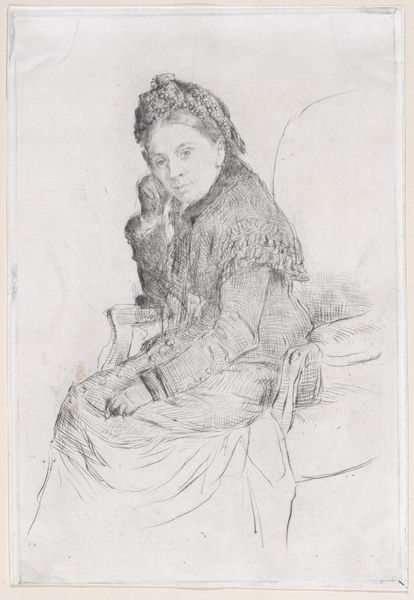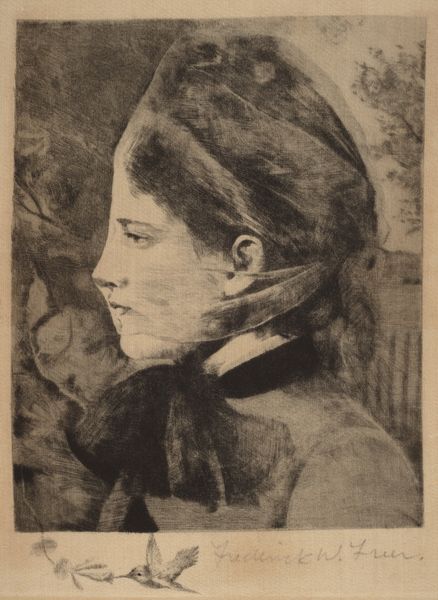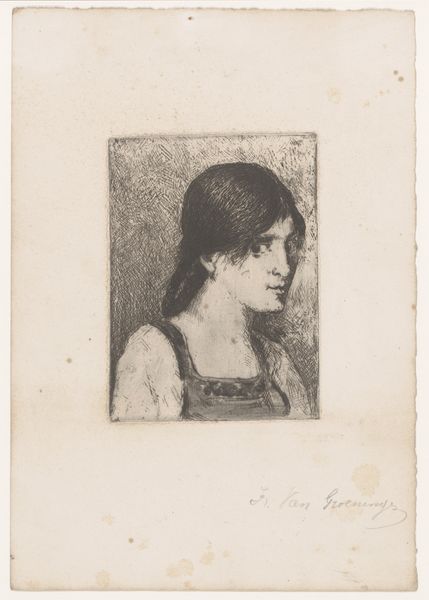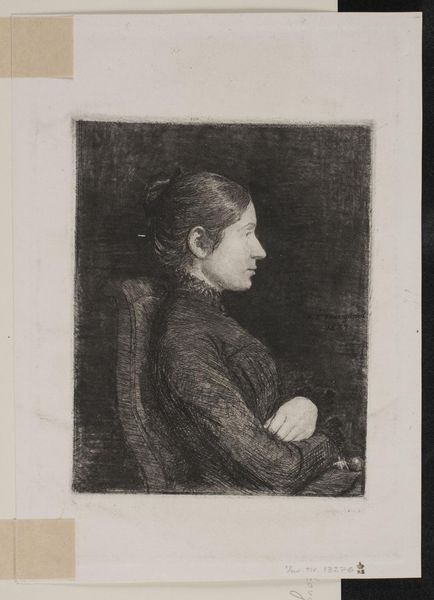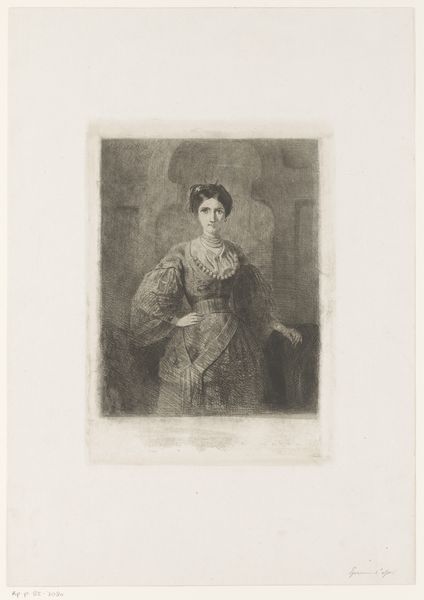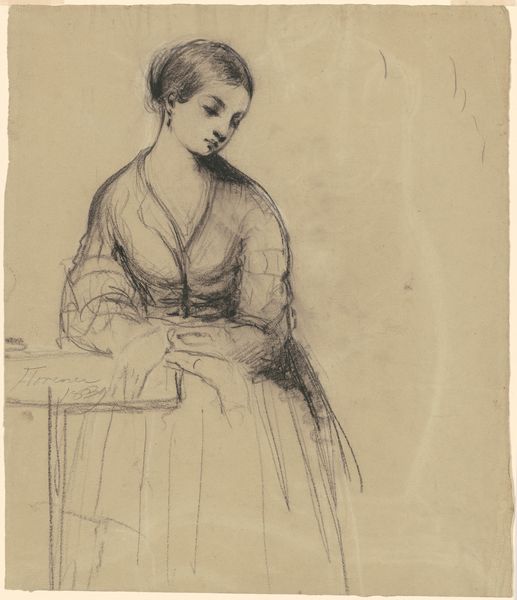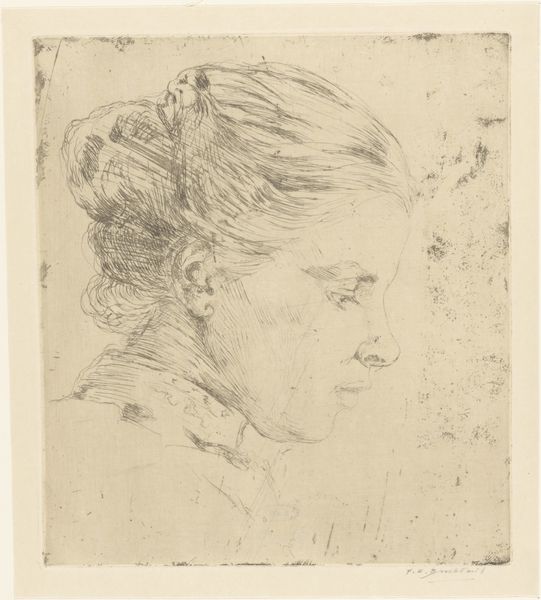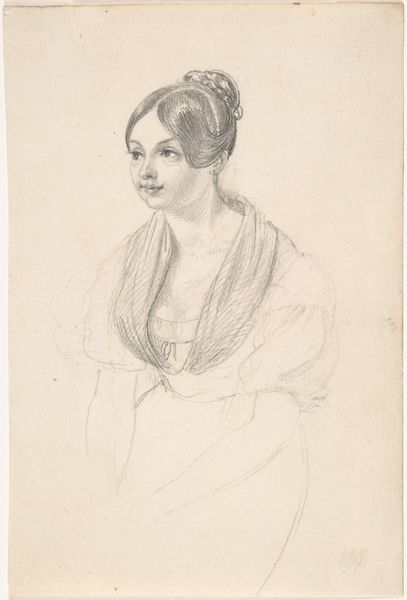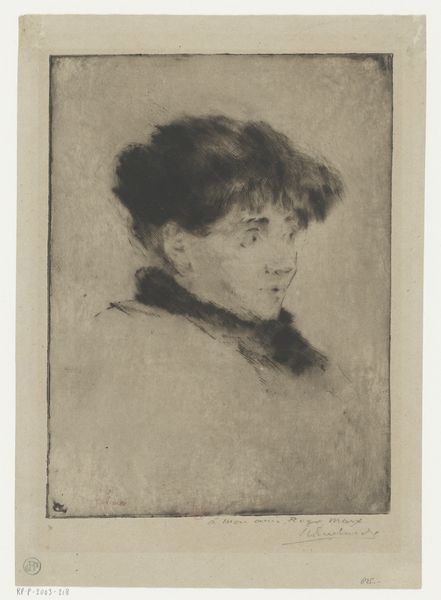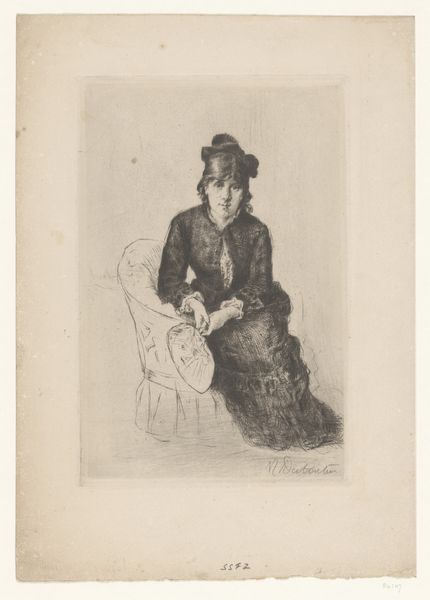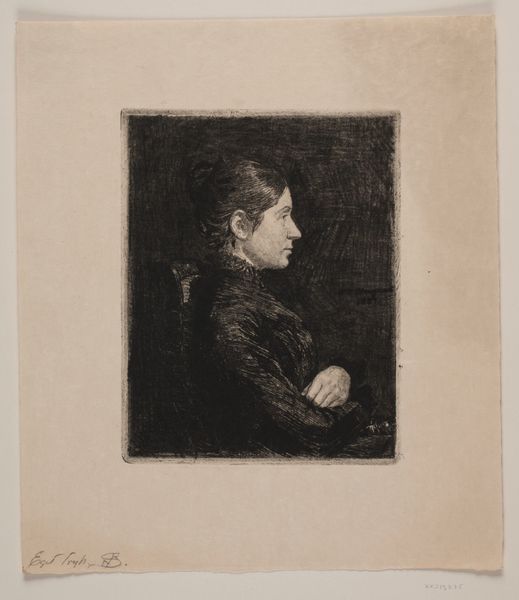
print, etching
#
portrait
# print
#
etching
Dimensions: height 278 mm, width 200 mm
Copyright: Rijks Museum: Open Domain
Editor: We’re looking at Norbert Goeneutte’s "Portrait of an Unknown Young Woman," an etching dating from before 1888. It’s held at the Rijksmuseum. I find the line work fascinating; it feels both delicate and unfinished, capturing a sense of fleeting observation. How do you interpret this work in its historical context? Curator: Given that this is a print, it's interesting to think about its availability and intended audience. Before 1888, printmaking was becoming increasingly accessible, bridging the gap between fine art and popular imagery. Who do you think this portrait was intended for? Editor: Maybe for the rising middle class? It seems like they would want access to art, but might not be able to afford an original painting. Curator: Precisely. Consider the "unknown" aspect of the sitter, too. Portraits were often commissioned by the wealthy. By printing an unknown woman, Goeneutte democratizes portraiture. The subject's gaze is also crucial here. She's meeting our eyes, engaging the viewer in a very direct way. This contributes to the sense of approachability, don't you think? Editor: I see what you mean. Her expression doesn’t carry the same weight as portraits of prominent figures, making it more relatable to everyday people. I didn't think about prints as democratizing art and imagery. It gives me a whole new perspective! Curator: Exactly. This simple etching challenges traditional portraiture and highlights the shift in artistic production and consumption during this era. It's a fascinating piece to consider in terms of social access and artistic intent. Editor: I'm now looking at etchings with new eyes! Thank you!
Comments
No comments
Be the first to comment and join the conversation on the ultimate creative platform.
